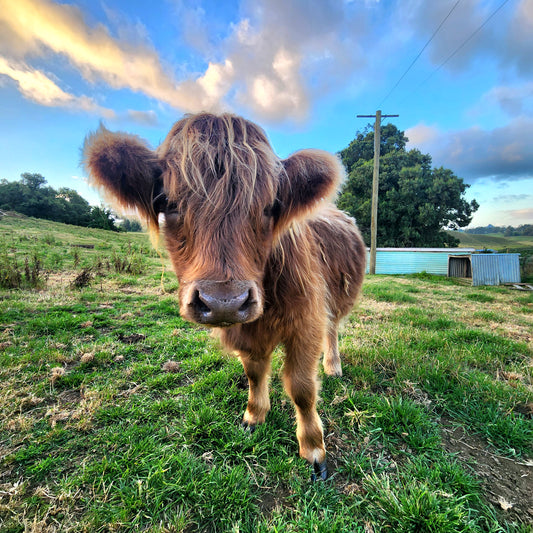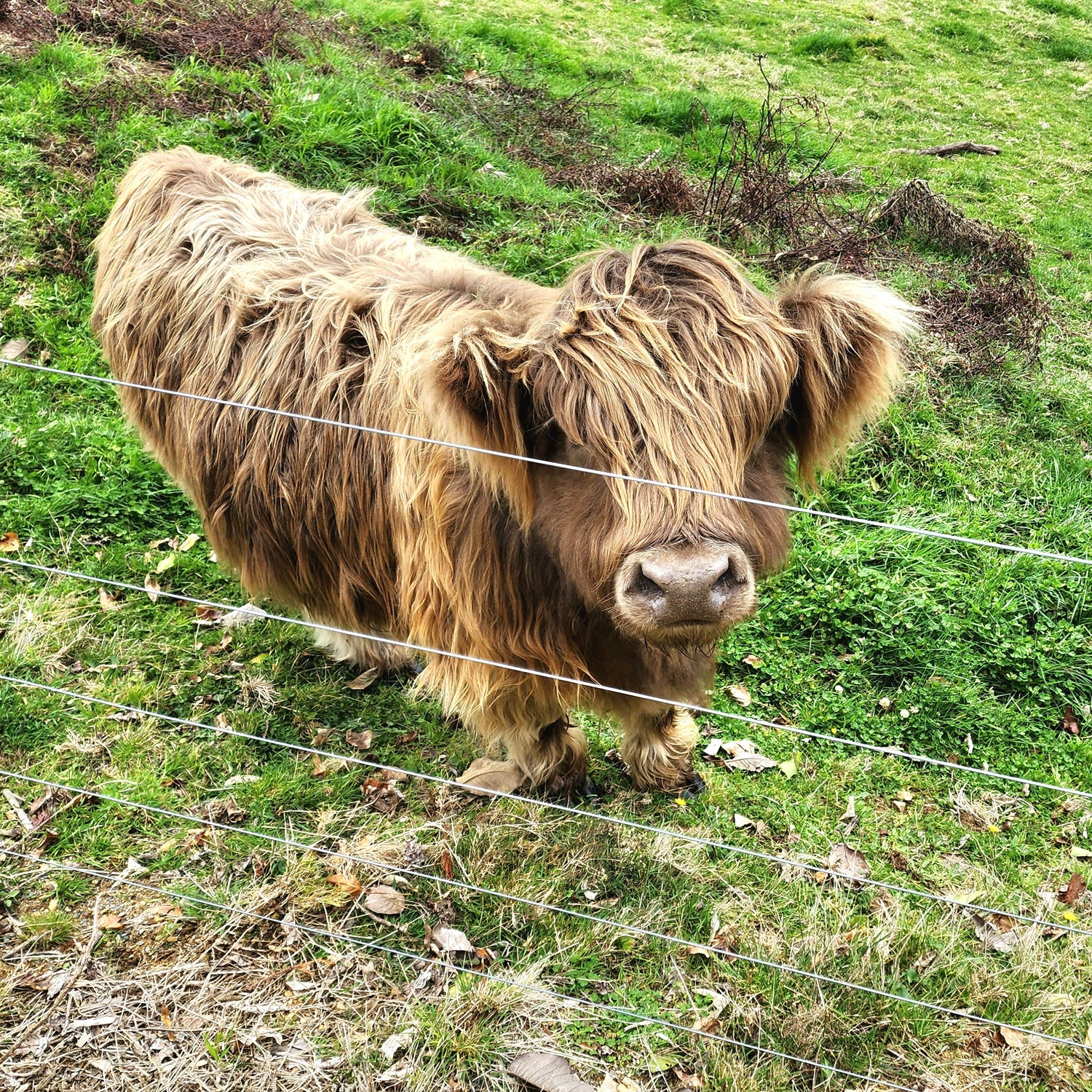Mini Highland cows are growing in popularity thanks to cute mini cow content on Tik Tok and Instagram. This growth in popularity means that there are lots more enquiries - which is great, because mini cows are great fun - but there aren't enough minis to go around.
Cows only have one calf per year (gestation is about nine months and it's at least another six weeks before they cycle again), and sometimes they don't survive, but there's also a chance that a mini cow will have a mini calf.
Most of the mini moos you see on social media are based in the US - we do things a little different down here in Aotearoa/New Zealand. The Amercians seem to be doing a lot of embryo breeding, which increases the number of calves a breeder has available.
The Americans are also decades ahead of us when it comes to cross breeding and strategically using chondro (read more about that here) to get smaller and smaller animals. The gene pool is much wider in America and they have access to much more testing options.
Mini cows are also very expensive in America. You can see the recent auction for Pandarosa Miniature Cattle Ranch here. Prices start from USD7,500 for a solid colour chondro negative steer to USD28,000 for a chondro positive high percentage Highland cross heifer and up to USD54,000 (double the winning bid for bull rights) for a high percentage Highland cross bull.
You will see from the auction that some of the calves are weaned when sold (it doesn't state if these are cow reared or bottle fed) but most are sold as "on bottle" for the new owner to hand rear. Many American breeders are using dairy cows as recipients for mini cow embryos and this is how they end up with so many mini calves available for hand rearing or "bottle babies" as they are called.
Here in Aotearoa/New Zealand, unless something goes (drastically) wrong, mini calves are left on their mini cow mums until they are weaned. It is very unlikely that a breeder will have a mini Highland available for hand rearing. The exception to this rule is when a dairy farmer has used mini Highland straws and has a dairy cross calf available for bottle feeding.
In America, they have been cross breeding Highlands with White Parks, Belted Galloways and Herefords for a long time and now have high percentage Highlands that are coloured, Either fluffy and white with coloured points (High Parks), speckled (or roan) (High Parks), fluffy and belted (Highloways), fluffy with white faces or fluffy with white faces and belts (Panlanders).
The mini cow content creators on social media seem to refer to all of these mini fluffy cows as "mini Highlanders", but here in Aotearoa/New Zealand when referring to "mini Highlands" we mean a fluffy, solid coloured calf that will grow horns.
Here at Marlowe Park Miniature Cattle we are crossbreeding for size, fluff, colour and (no) horns which means we don't have any miniature Highland calves available. We are hopeful for some 75% or 3/4 Highland calves available this year but these won't be solid coloured like a Highland and will (hopefully) not have horns.
Here in Aotearoa/New Zealand, our cattle are predominantly grass fed. Different farms run a different system, but here at Marlowe Park Miniature Cattle we feed only grass (fresh or silage during winter and summer, with hay as a treat). In places like America, they seem to supplement the pasture feed with more hay and grain than we use here.
This distinction in feed systems is to say, that Americans seem to recommend much less area for mini cows than we do. This is because Americans seem to supplement feed much more than we do here in Aotearoa/New Zealand. We recommend a minimum of one hectare for two mini cows (plus supplement for the wet and the dry).
You can read more about food and friends for mini cows here and there are grazing calculations here to see if you have enough land for mini cows. For context. our three bulls have two hectares of grazing and receive supplement silage. Our nine cows have five hectares of grazing and also receive supplement silage.





